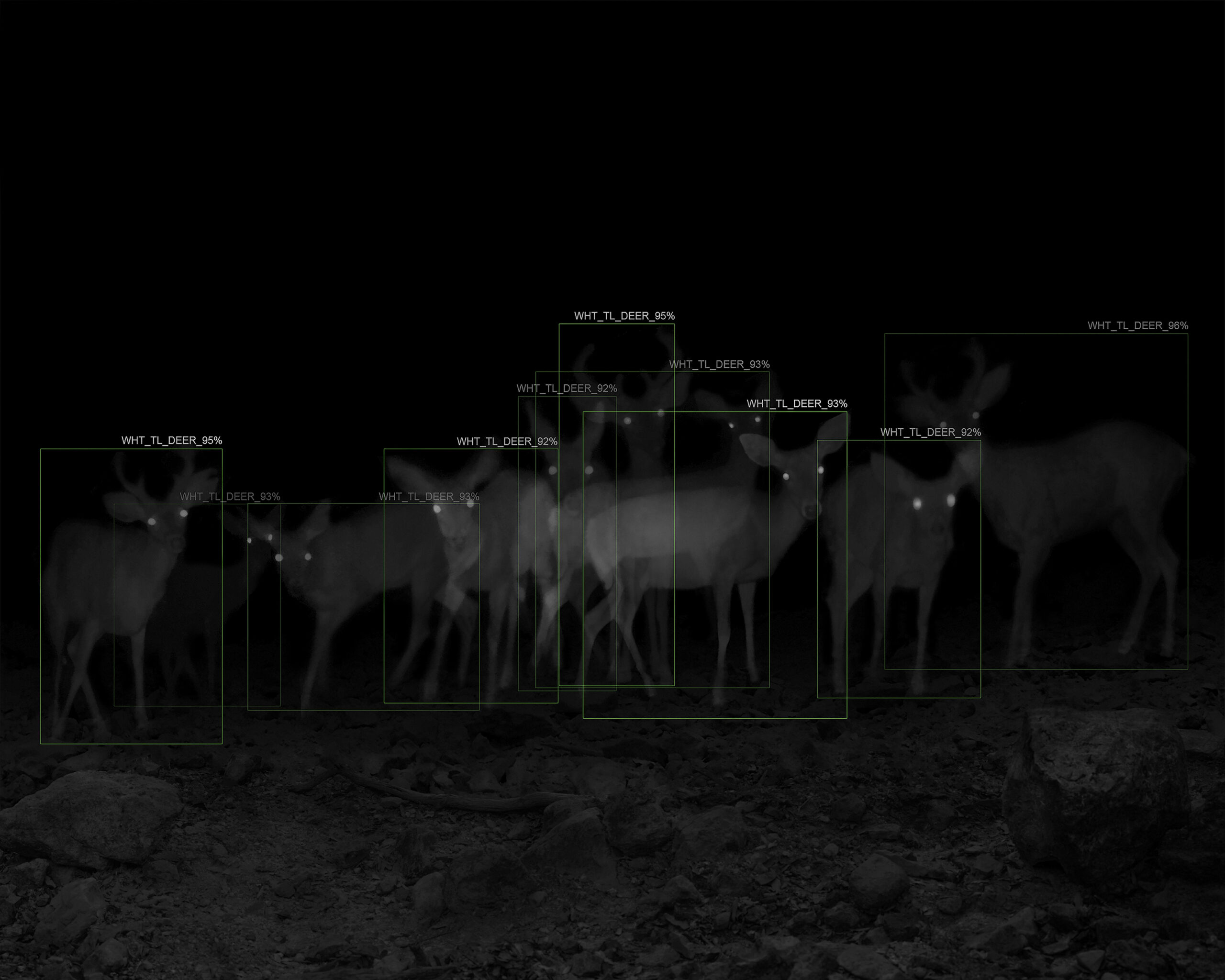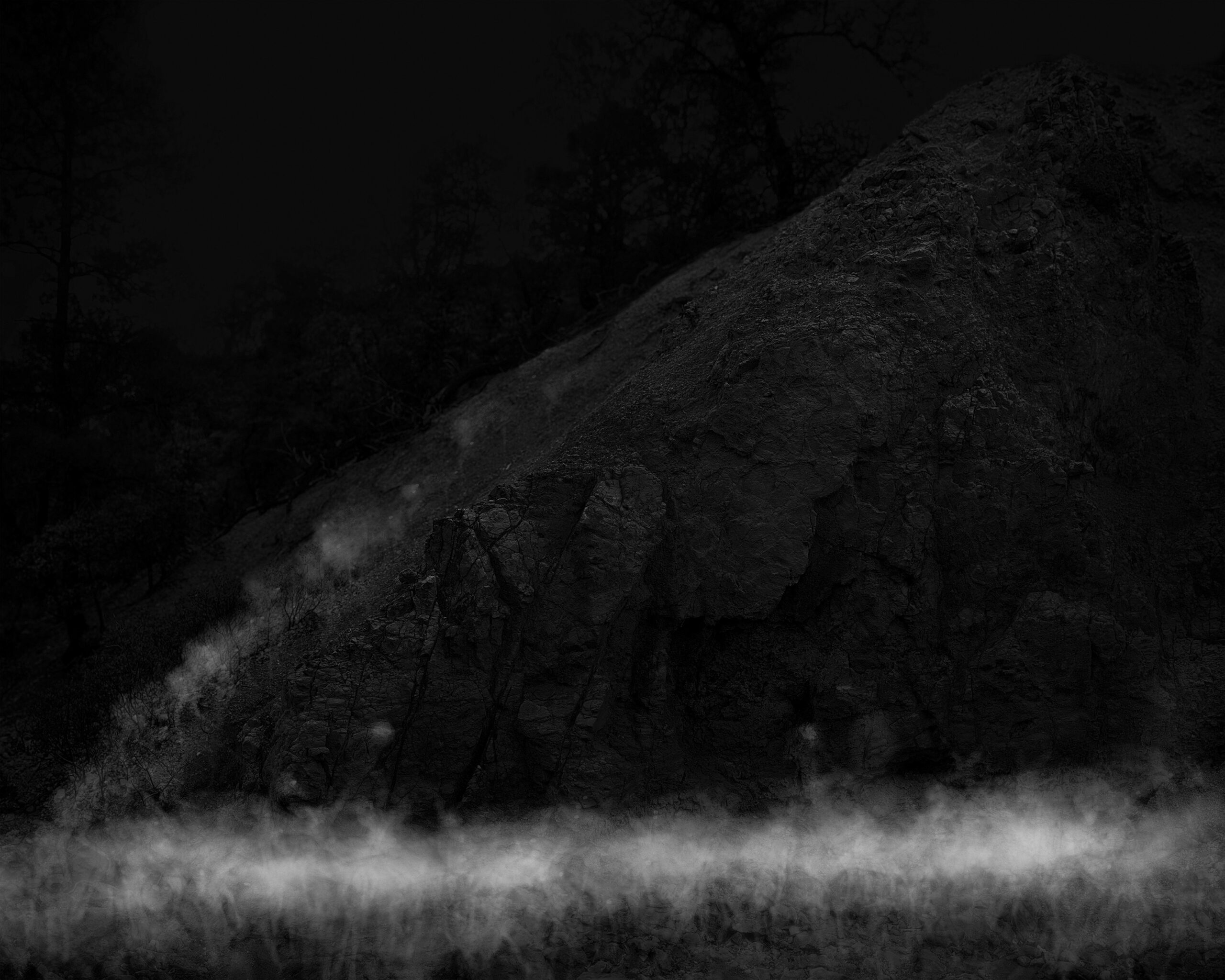Photographer: Alex Turner
Alex and I connected a few weeks ago after many of our circles began to overlap. We shared friends in the art, commercial and conservation spaces and I reviewed some of his images from a recent Patagonia journal project. Our conversation left me with so many questions about his interdisciplinary research and artwork. Along with making this impressive body of work, Alex’s love of the outdoors and intriguing perspective of how we see and surveil the world leaves me curious and excited for what’s next. Here’s what he had to say about his project, Blind River.
Heidi: How long have you been in the conservation field and has photography always been a part of this work for you?
Alex: I’ve always been interested in the environmental sciences and conservation, but only recently worked in a professional capacity within either of the fields. I’m currently working at an environmental nonprofit focused on forest restoration in Los Angeles, and was recently a citizen scientist with wildlife biologists at the University of Arizona. In both cases, I used these relationships to inspire my artistic practice. The collaborative work I did with wildlife biologists resulted in my most recent photographic project called Blind River, and my current role in forest restoration is informing my current body of work.
How did this idea for Blind River come about, was this the first installation of this work at Marshall Gallery?
While I was a graduate student at the University of Arizona, I was amazed to learn that jaguars occasionally migrated across the US/Mexico border. I reached out to the research team that was tracking their movements, and began to envision a photographic project related to that research. The team uses motion-triggered infrared cameras to monitor them, and then runs that footage through a customized A.I.-based facial recognition software to identify different species of animals. It became apparent to me very quickly that, based on the locations of these cameras, the team inevitably records and identifies a lot of activity outside the parameters of their research. Considering that the US government uses these same technologies in the same environments, I realized that this was a unique way to examine the surveillance tactics deployed along the border through the lens of an organization with completely different motives. I had a show of my work at the University of Arizona Museum of Art as part of my thesis, as well as a solo show in New York and various other group shows, including one recently at Marshall, and another show there this summer. LACMA recently acquired one of the pieces for their permanent collection, and it will be on display in the 2024 Pacific Standard Time exhibition. On July 15th I’ll be in a 3 person show at the Marshall Gallery, the working title is called Rendered Realities.
How long has A.I. been on your mind and what concerns do you have?
A.I. has been on my mind for a long time, and the current iterations of it are already so much more advanced and sophisticated than anything that I was working with even 3-4 years ago. But the concerns that I hoped to address with Blind River are not dissimilar from the concerns of A.I. today, namely: what happens when A.I. is wrong? And how do we operate in a world where we are more and more detached from each other, or any lived experiences for that matter?
How long are the remote sensing and recognition applications deployed?
I was monitoring dozens of cameras in several mountain ranges on the US/Mexico Border in Arizona for the better part of 3 years. Each one required me to go out and change batteries and SD cards every couple weeks, especially if they were in ‘active’ areas. Some cameras would go weeks without capturing any activity, and some were constantly capturing deer, bears, foxes, humans, mountain lions and everything in between. Many of these cameras were in very remote areas with no trails, requiring hours of bushwhacking through difficult desert mountain terrain. Often, the same environmental features that attracted wildlife also attracted human movement, including the paths of least resistance and access to water. Because each SD card could have thousands of photos, the research team collaborated with engineers to develop an A.I. software that could help identify species in each picture, potentially saving the researchers countless hours of cataloguing data. While I’m no longer a citizen scientist with the team, their research is ongoing and will continue for many years.
What data sets are you combining in order to raise questions and what surprised you about the cross overs?
All of the data I collected was in collaboration with the wildlife biology team. The infrared footage I use in my artwork is part of their research and data, as well as the A.I. recognition results. When a picture of a human is categorized as a ‘human’ by the software, it is categorized in their database as such. While the footage and data is most likely very similar to the footage and data collected by Border Patrol, we are in no way working in partnership with them, nor are we sharing data or information. I have footage of the cartel moving across the border, and Border Patrol likely has footage of jaguars moving across the border. We simply have different motivations and intentions. For me, that difference is key to the project: it allows you as the viewer to see the different ways these technologies can be used, and weigh the positive and negative outcomes and draw your own conclusions.
The fused imagery illustrates several paradoxes: human/dehumanized/intimate/loose/natural landscape and the observation of. How did this idea emerge and why was it important to you to push photographic boundaries?
One of the more jarring moments in the making of Blind River was looking at the infrared photos on a computer screen for the first time. Having just visited these places, I was surprised at how foreign and alien they felt in the photos. Part of it was the way space and subject is depicted with infrared technology, but also how little information is actually available in the photos. The sensors are very small, so the resulting images are very pixelated and blurry. The gulf between the technology and real life experience I had was stark, and I wanted to highlight that disparity. I made very high resolution panoramas of the landscapes from the same perspective as the motion sensor camera, then overlaid the subjects from the infrared cameras into these immersive landscapes. The figures are vague and not well defined in contrast to their detailed surroundings. I’m interested in showing both the possibilities and limitations of these photographic technologies. Undoubtedly these technologies will only get better, but they will never substitute reality…there will always be a level of detachment between us and the subject being depicted or captured. Photography’s tenuous relationship with truth and reality has always been interesting to me, but today it feels particularly prescient in the face of surveillance and A.I.
Did the questions iterate over time?
I wasn’t entirely sure what questions this project would pose when I first began working on it, but I found myself wondering ‘what is my role in all of this?’ quite often. As the surveillant, I have the ability to curate data and footage for the viewer, regardless of my understanding of this space or my authority or expertise. There is a lot of public rhetoric surrounding the border today, but how much can we truly claim to know about this space by looking at it through our screens, or reading about it, or studying and surveilling it from afar? I think it’s a pressing question for all of us, but particularly for those who wield considerable influence over the region.
Now that you are based in Los Angeles, what photography projects are you working on, and what do you hope to do?
Working with a forestry restoration organization in California, my current focus is on trees. But my new project is about trees the same way that Blind River was about jaguars, meaning there’s a lot more happening in the work. My tree project incorporates thermal technology, which has many different real world applications, much like infrared. I’m fascinated by the variety of imaging technologies available today, and I love repurposing those technologies for artistic projects. Troubleshooting is a huge part of the process, as I’m often trying to use these tools for something very different than their intended applications. That being said, I’m excited to put work out into the world, hopefully soon.
—











